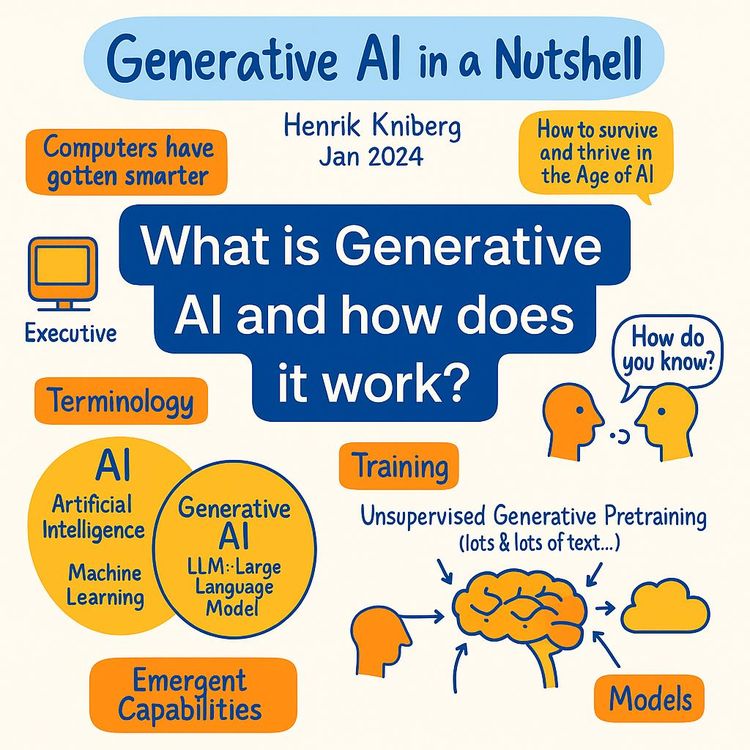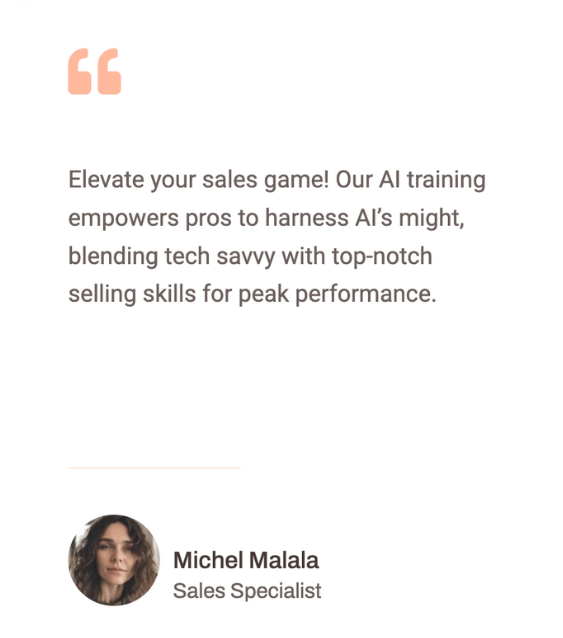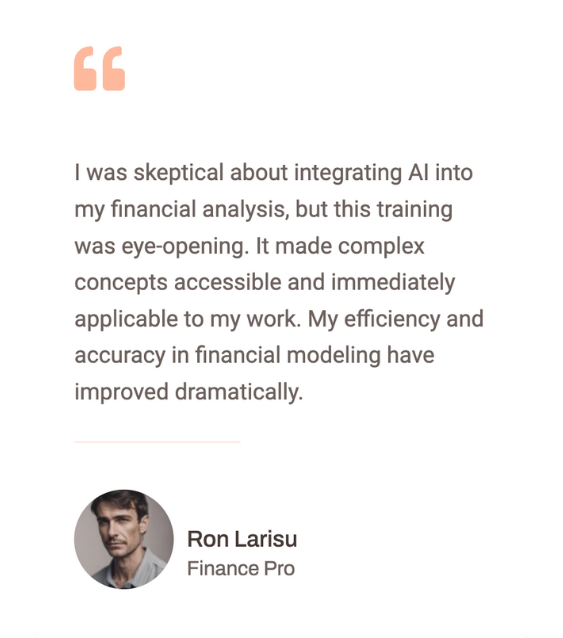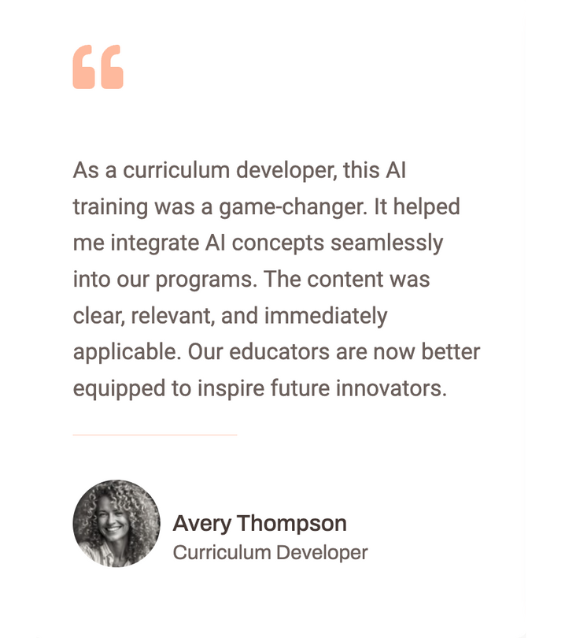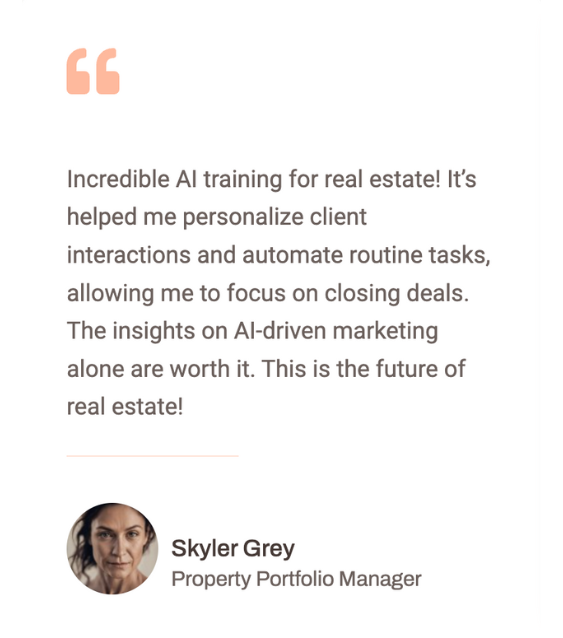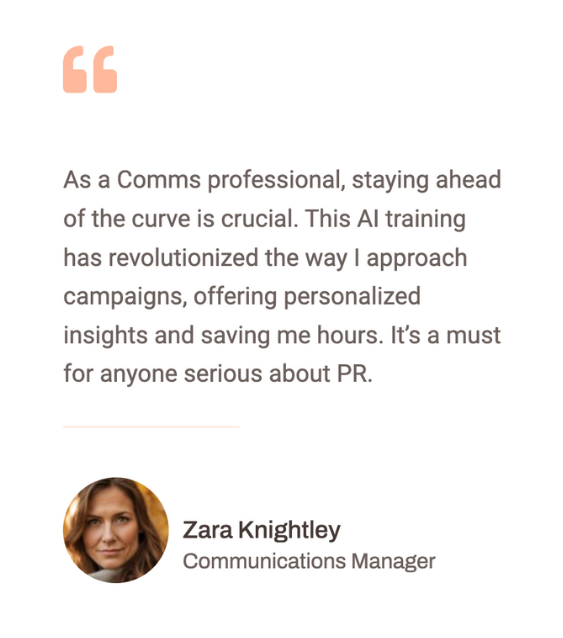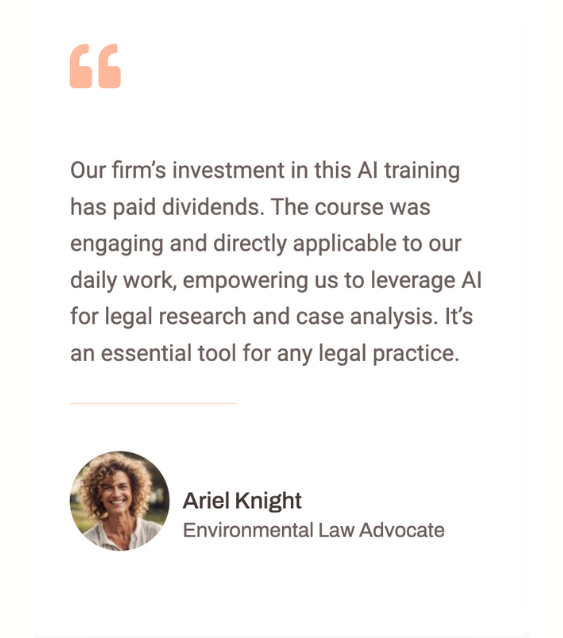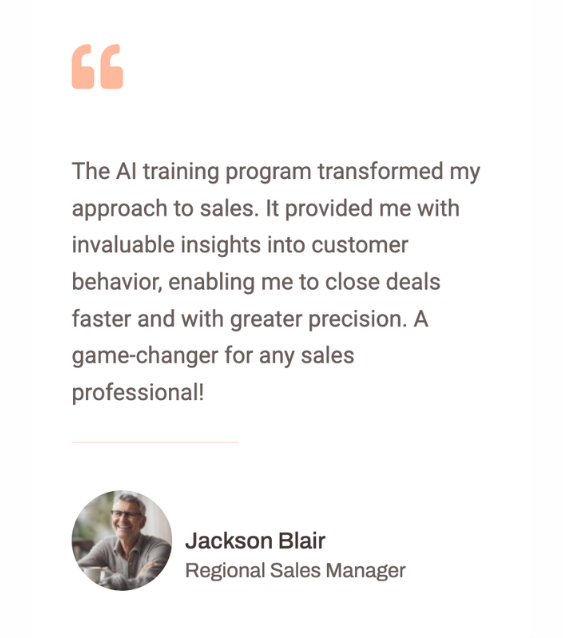AI Governance, Risk & Compliance: ISO 42001 AIMS Guide (Module 4) (Video Course)
Turn AI governance from patchwork into a working system. This module shows you how to build an AI Management System, use proven standards and a healthtech case, handle high-risk work, and ship with confidence,evidence ready, audits calm, teams moving faster.
Related Certification: Certification in Implementing ISO 42001 AIMS for AI Governance Risk & Compliance

Also includes Access to All:
What You Will Learn
- Design and implement an AI Management System (AIMS) aligned with international standards
- Identify, score, and treat AI risks such as model drift, bias, and data breaches
- Apply data governance controls for lawful acquisition, consent, provenance, and quality
- Operationalize governance with roles, workflows, monitoring, model cards, and audit evidence
- Prepare for high-risk regulatory requirements (EU AI Act, GDPR) and post-market monitoring
- Discover, manage, and safely enable Shadow AI through inventories, policies, and secure gateways
Study Guide
Free Short Course - AI: Ethics, Risk, and Compliance - Module 4
If you're serious about using AI in business, you can't treat governance, risk, and compliance as an afterthought. You need a system. Not just policies in a shared drive. A living, breathing management approach that keeps you innovative without putting your customers, your reputation, or your bottom line on the line. That's what this module is about.
An AI Management System (AIMS) brings order to the chaos. It gives you a consistent way to decide what to build, how to build it, how to keep it safe, and how to prove it. We'll start from scratch, build the foundations, walk through a real-world case study in health technology, and then push into what's next,where AI governs AI and compliance becomes continuous.
By the end, you'll know how to design and implement an AIMS based on internationally recognized standards, handle high-risk AI scenarios, and bake ethical and legal thinking into every model and decision. This isn't theory for academics. This is a practical blueprint you can apply in the real world.
What This Module Covers (and Why It Matters)
Here's the short version: you'll learn how to build and run a formal AI Management System using a proven framework. We'll cover leadership decisions, risk assessment, data controls, model oversight, and cross-jurisdiction compliance. We'll use a health tech company and its diagnostic tool as our case study because the stakes are real there: patient safety, strict regulation, and intense scrutiny. If you can build governance for a healthcare AI system, you can build it anywhere.
Without structure, AI programs turn into patchwork,Shadow AI pops up, risks go unnoticed, and a random audit or model failure can derail everything. With an AIMS, you set the rules, implement controls, track risks, and keep evidence ready. It's how you move from reactive firefighting to proactive, responsible growth.
Foundations: What Is AI GRC and What Is an AIMS?
An AI Management System (AIMS) is a formal framework of policies, processes, roles, and controls that direct and manage AI across its lifecycle,strategy, design, data, development, deployment, monitoring, and retirement. It sits inside your broader Governance, Risk, and Compliance (GRC) approach, but it treats AI as a first-class citizen with its own risks and responsibilities.
Think of GRC as the map, and your AIMS as the vehicle. The map gives you direction (governance), warns you about hazards (risk), and helps you follow the rules of the road (compliance). The vehicle is how you move with control and speed.
Examples:
1) Governance: Your leadership publishes an AI policy that bans scraping personal data without consent and requires human oversight for any model influencing credit, hiring, or medical decisions.
2) Risk: You identify model drift as a critical risk for a fraud detection system that loses accuracy as fraud patterns change, and you create drift detection thresholds with automatic rollback.
3) Compliance: You deploy a customer-support chatbot and implement consent prompts, logging, and opt-out mechanisms to meet privacy requirements.
The Business Case for an AIMS
There are three reasons to formalize AI governance: avoiding harm, earning trust, and accelerating execution. Without structure, your team makes one-off decisions and hopes for the best. With an AIMS, you do four things consistently: define what's allowed, assess risks early, implement specific controls, and keep evidence for auditors and customers. This reduces wasted effort, legal exposure, and the fear that slows teams down.
Examples:
1) Faster approvals: Teams get a clear workflow for launching AI pilots,intake form, data review, DPIA, sign-off,so they don't wait weeks for unclear approvals.
2) Trust at scale: A healthcare partner agrees to pilot your product because you can show documented controls for data acquisition, quality, and human oversight.
The Four Pillars: Building the AIMS Foundation
Every resilient AIMS rests on four pillars. If one is weak, the whole structure shakes.
1) Leadership Buy-In
Executives must review and enforce AI policies, fund the work, and back difficult calls. Without top-down pressure and support, governance stays optional.
Examples:
- The CEO mandates that any AI used for customer decisions must include human oversight and audit trails.
- The Board adds AI risk as a standing agenda item and requires quarterly reporting on incidents, DPIAs, and model changes.
2) Business Use Definition
Define exactly how AI serves your strategy and where it will be used. Separate internal productivity tools from product features and critical decision engines. Don't forget Shadow AI,tools used without approval.
Examples:
- Internal: Sales uses a summarization tool for call notes. It's allowed but routing through a secure gateway is required.
- Product: A diagnosis support model that classifies patient risk is high-stakes, triggers stricter controls, and requires clinical oversight.
3) AI Risk Identification
Create a systematic way to find and document risks before they find you. Look at bias, privacy, safety, security, reliability, and misuse across the lifecycle.
Examples:
- Bias risk: Training data skews toward one demographic, leading to unequal performance across groups.
- Reliability risk: A model trained on pre-pandemic data underperforms on current patterns,classic model drift.
4) Resources and Responsibilities
Assign owners and equip them. You need technical leads, product owners, legal/compliance partners, security, and an ethics voice. Roles and decision rights must be crystal clear.
Examples:
- A Model Owner is accountable for performance and monitoring; a Data Steward is accountable for data provenance and quality; Compliance reviews applicability of laws and records DPIAs.
Step-by-Step: How to Stand Up Your AIMS
Use an international standard like ISO/IEC 42001 as your scaffolding. You don't need to reinvent best practice. Start with context, stakeholders, scope, and obligations. Then operationalize with policies, processes, and controls.
Context of the Organization
Describe what you do, where you operate, and why AI matters to your mission. Tie this to your risk appetite and regulatory exposure.
Examples:
- A fintech builds an underwriting model,regulatory scrutiny is high, and transparency expectations rise.
- A media company uses generative text internally for drafts,lower external risk but still a privacy concern if customer data is used.
Stakeholders
List who is affected by your AI decisions and what they need. Internal teams, customers, regulators, auditors, and the public each have different expectations.
Examples:
- Clinicians need clear model outputs and known error rates to make safe decisions.
- Regulators expect documented risk management and evidence of ongoing monitoring.
Scope
Write a scope statement that defines what your AIMS covers and what it doesn't. Don't let scope creep swamp your team.
Examples:
- In scope: All models that influence healthcare diagnosis or treatment, and any data pipelines that feed them.
- Out of scope: Non-AI software and third-party AI not controlled by your organization, plus internal-only admin tools.
Regulatory Landscape
Map every jurisdiction you operate in and the laws that apply, including privacy and AI-specific regulations. For healthcare, plan for high-risk classification in certain regions.
Examples:
- You operate in Australia and the EU. You must comply with Australia's Privacy Act, GDPR in the EU, and the EU AI Act requirements for high-risk systems.
- Your model uses sensitive health data, so DPIAs, strict data governance, and human oversight are non-negotiable.
Risk Management That Actually Reduces Risk
Adopt a simple, repeatable risk process similar to ISO 31000: Identify, Analyze, Evaluate, Treat, and Monitor. Use an organizational risk matrix combining likelihood and impact. Define tolerance: what you will and will not accept.
How to Score Risks Without a Table
- Likelihood scale: Rare, Unlikely, Possible, Likely, Almost Certain.
- Impact scale: Insignificant, Minor, Medium, Major, Catastrophic.
- Combine them: Possible + Catastrophic = Extreme; Unlikely + Minor = Low. Anything at or above your threshold (for healthcare, usually Medium or higher) must be treated.
Examples:
1) Model drift causes misclassification of cardiac risk. Likelihood: Possible. Impact: Catastrophic. Overall: Extreme. Requires immediate treatment and continuous monitoring.
2) Third-party LLM used by marketing leaks non-public strategy in prompts. Likelihood: Likely. Impact: Medium to Major depending on content. Requires a secure gateway and redaction controls.
3) Facial recognition misidentifies patients across demographics. Likelihood: Possible. Impact: Major for rights and safety. Requires bias testing, representative data, and human-in-the-loop review.
4) API vulnerability exposes partial health records. Likelihood: Unlikely with good security controls. Impact: Major. Still treated due to sensitive data.
Designing a Risk Treatment Plan That Works
A risk treatment plan documents how you reduce a risk from its inherent level to an acceptable residual level. Pick controls that directly reduce likelihood, impact, or both. Assign owners, timelines, success metrics, and evidence requirements.
Key Elements of a Risk Treatment Plan
- Control selection: Choose technical, procedural, and organizational controls based on standard annex controls.
- Residual risk target: Define the new expected rating (for model drift, aim to reduce from Extreme to Medium or Low).
- Owners and dates: Name the person responsible and a delivery deadline.
- Monitoring: Define what gets measured (AUC, false positive rate, drift score), how often, and who reviews it.
- Evidence: Log changes, decisions, and approvals to prove compliance.
Examples:
1) Drift risk treatment: Set drift detection thresholds with population stability index and concept drift detectors; schedule periodic retraining; include human review for borderline cases; implement automated rollback to last stable model; require sign-off for redeployment.
2) Bias risk treatment: Build representative datasets; use fairness metrics (e.g., equalized odds or demographic parity where appropriate); run counterfactual testing; include group-level performance reporting in model cards; add user-level warnings when uncertainty is high.
Data Governance Control A.7.3: Acquisition of Data
Data acquisition is where ethics and legality start. The goal is to source the right data from the right places, with documented justification and the right permission.
How to Implement
- Policies: Write guidelines that define approved sources, prohibited methods (e.g., scraping without consent), and contractual requirements for partners.
- Legal compliance: Check Privacy Act, GDPR, and AI regulations. Conduct DPIAs for projects involving sensitive data and cross-border transfers.
- Consent: Use clear, informed consent with purpose limitation and withdrawal options. Track consent state over time.
- Data provenance: Record origin, transformation steps, and lineage. This underpins traceability, audits, and reproducibility.
- Ethical review: Run proposals through an ethics committee or review board for fairness, necessity, and potential harm.
Examples:
1) Clinical partner data: You sign a data-sharing agreement with a hospital that defines purposes, retention, and re-identification prohibitions. Consent is captured in the clinic's workflow and verified in your intake process.
2) Public datasets: You use an open ECG dataset with a license allowing research and commercial use. You log the license, verify de-identification, and document whether the demographics match your intended population.
Tips and Best Practices
- Make "data minimization" a default,only collect what is needed for the model's performance and explainability.
- Ban proxy features that may encode protected characteristics unless there's a documented, ethically justified reason and strict controls.
- Keep a live data inventory with owners, purposes, retention dates, and legal basis for processing.
Data Governance Control A.7.4: Quality of Data for AI Systems
Garbage in, garbage out. Data quality affects every model metric you care about. Define what quality means, measure it, and act on deviations.
Core Dimensions
- Accuracy: Are values correct and validated against trusted sources?
- Completeness: Are required fields present? How do you handle missingness?
- Consistency: Do formats, units, and definitions match across sources?
- Timeliness: Is the data fresh enough for the decision at hand?
- Relevance: Does the data meaningfully contribute to the prediction without introducing unjustified bias?
Examples:
1) Accuracy: Automated checks flag heart rate entries above a physiological threshold; flagged records go to a data steward for resolution.
2) Completeness: A rule rejects model training batches with more than a set percentage of missing blood pressure values; imputation methods are documented and tested for bias.
3) Consistency: All blood pressure readings use mmHg; you standardize free-text medication names using a controlled vocabulary.
4) Timeliness: ECG data older than a threshold is excluded from real-time inference; stale data triggers alerts.
5) Relevance: You exclude postal code from training because it correlated with outcomes in a way that introduced demographic bias.
Techniques That Help
- Schema enforcement and unit tests for data pipelines.
- Data profiling and anomaly detection dashboards.
- Stratified sampling to avoid skew.
- Data versioning with rollbacks for problematic revisions.
Beyond Data: Controls for Human Oversight, Transparency, and Operations
Two data controls alone won't keep you safe. Build a complete control set that covers the whole model lifecycle.
Core Control Categories
- Human-in-the-loop: Require human review for high-impact decisions and edge cases.
- Transparency: Provide understandable explanations, known limitations, and user guidance.
- Logging: Record inputs, outputs, and decisions for auditability and incident reconstruction.
- Change management: Use a formal process for model changes with approvals and rollback plans.
- Security: Protect training and inference pipelines; restrict access to model artifacts.
- Vendor management: Assess and monitor third-party AI tools and data providers.
- Incident response: Define what counts as an AI incident, how to triage, and who reports what to regulators.
Examples:
1) Human oversight: A clinician must approve any automated high-risk diagnosis; the system highlights uncertainty and suggests follow-up tests.
2) Transparency: You publish a user-facing model card with training data descriptions, known failure modes, and appropriate use contexts; inside the app, you provide concise explanations and confidence bounds.
Case Study: HealthTech AI and the CardioPredict Tool
Let's put it all together using a realistic example. HealthTech AI is a mid-sized health technology company in Australia. It built CardioPredict, a machine-learning tool that analyzes sensitive patient data,ECG, blood pressure, lifestyle inputs,to predict cardiovascular risk. The company plans to expand into the EU, which introduces strict regulatory expectations. Under the EU AI Act, a medical diagnostic tool like CardioPredict would likely be classified as a high-risk AI system.
Phase 1: Context, Stakeholders, Scope
Context
- What they do: Develop AI diagnostic tools that influence patient care.
- Where they operate: Australia with expansion into the EU,multiple legal frameworks apply.
- Key implication: High-risk classification triggers stringent requirements for data governance, human oversight, documentation, and monitoring.
Stakeholders
- Internal: Shareholders, product managers, data scientists, MLOps engineers, compliance, security, clinical advisors.
- External: Patients, clinicians, hospitals, regulators, auditors, insurers.
Scope Statement
In scope: The development, deployment, and lifecycle management of AI systems used in healthcare diagnostics; data governance for personal and health data; risk management for high-risk AI systems.
Exclusions: Non-AI software, third-party AI not controlled by HealthTech AI, and AI used solely for internal administrative purposes.
Examples:
1) In scope: Training pipelines for CardioPredict, data integrations with hospitals, model monitoring dashboards, and clinician-facing app components that present AI outputs.
2) Out of scope: An HR chatbot used internally that doesn't process patient data.
Phase 2: Risk Assessment and Treatment
HealthTech AI uses a likelihood-impact matrix and sets a very low tolerance for patient safety risks. Any risk affecting clinical outcomes or fundamental rights requires treatment.
Key Risks
- Model drift leads to incorrect risk predictions. Inherent rating: Extreme (Possible + Catastrophic).
- Bias across subpopulations produces unequal recommendations. Inherent rating: High to Extreme depending on observed disparities.
- Data breach exposes sensitive health data. Inherent rating: High (Unlikely + Major).
- Overreliance by clinicians due to unclear limitations. Inherent rating: High.
Treatment Plan for Drift
- Implement drift detection with defined thresholds (e.g., population stability index).
- Schedule periodic evaluation against a holdout clinical dataset and external validation sets.
- Mandate human review for ambiguous cases; display uncertainty and rationale.
- Enable automated rollback to last validated model on threshold breach.
- Require clinical safety officer approval for redeployment after changes.
Examples:
1) Monitoring: Daily drift reports summarize key metrics; alerts notify the model owner and clinical lead if thresholds are crossed.
2) Residual risk: After controls, the drift risk drops from Extreme to Medium, contingent on continuous monitoring and human oversight.
Phase 3: Applying Data Controls A.7.3 and A.7.4
Acquisition of Data (A.7.3)
- Policies: Only use patient data from approved partners; prohibit scraping; require purpose-specific consent.
- Legal compliance: Perform DPIAs; confirm legal basis for processing; manage cross-border data transfers with proper safeguards.
- Consent management: Track consent state at the record level; provide withdrawal mechanisms; update training datasets when consent changes.
- Ethical review: A committee evaluates fairness, necessity, and potential harm before new data sources are approved.
Quality of Data (A.7.4)
- Accuracy checks: Validate readings against physiological limits; flag anomalies.
- Completeness thresholds: Reject batches with excessive missing critical fields.
- Consistency: Standardize units and terminologies; enforce schema.
- Relevance: Remove proxy variables that introduce bias without medical justification.
- Timeliness: Exclude stale data from real-time inference; timestamp all records.
Examples:
1) DPIA: HealthTech AI identifies risks around re-identification and limits data sharing to de-identified, consented sets with explicit purposes; it documents mitigations and residual risks.
2) Data lineage: A provenance record shows the origin hospital, consent date, applied transformations, dataset version, and the model versions trained on it.
Meeting High-Risk AI Expectations in the EU
If you're expanding into the EU with a high-risk AI system, be prepared to demonstrate a robust risk management process, strong data governance, technical documentation, record keeping, user transparency, human oversight, accuracy/robustness standards, post-market monitoring, and incident reporting.
Examples:
1) Documentation package: You assemble model cards, data sheets, performance and bias audits, risk treatment plans, intended use statements, and human oversight procedures.
2) Post-market monitoring: You run a feedback loop to collect clinician reports on model errors, aggregate them, and prioritize fixes; serious incidents trigger formal reporting.
Shadow AI: Finding It, Fixing It, and Using It Safely
Shadow AI happens when employees adopt AI tools without oversight. It isn't malicious; it's momentum. Your job is to channel it, not crush it.
How to Manage Shadow AI
- Inventory: Run surveys and network scans to discover tools in use.
- Policy: Publish what's allowed, conditionally allowed, and prohibited with clear reasons.
- Safe gateways: Provide approved AI tools with data redaction and logging to make the safe path the easy path.
- Training: Teach staff what data they can share, how to anonymize, and how to check outputs.
- Exceptions: Create a lightweight approval path for pilots with guardrails.
Examples:
1) Marketing uses a generative tool for ad copy. You approve it via a secure internal gateway that strips sensitive data and logs prompts.
2) Finance tries a spreadsheet plugin that sends data to a third party. You block it until a privacy review and contractual protections are in place.
Operationalizing Your AIMS: Roles, Workflows, and Evidence
You win by making governance repeatable and lightweight where possible. Define workflows that teams can follow without a compliance chaperone on every call.
Core Artifacts
- AI inventory: List all models, their owners, purpose, and risk level.
- Risk register: Track risks, ratings, treatments, and status.
- DPIAs: Document privacy risks and mitigations for sensitive data processing.
- Model cards and data sheets: Communicate design, datasets, metrics, and limitations.
- Monitoring dashboards: Surface drift, bias, uptime, and incident metrics.
- Decision log: Capture key choices, who made them, and why.
Examples:
1) Intake workflow: A team submits an AI project brief; compliance triggers a DPIA; data stewards confirm sources; security reviews the pipeline; final approval is time-boxed to avoid bottlenecks.
2) Evidence mindset: Every control execution produces a breadcrumb,screenshots, logs, sign-offs,so audits are "show, not tell."
Metrics and KPIs That Matter
What gets measured gets managed. Choose metrics that reflect safety, fairness, performance, and operational health.
Suggested KPIs
- Time-to-approve AI pilots through the intake workflow.
- Percentage of AI projects with completed DPIAs and risk treatment plans.
- Model drift detection time and time-to-rollback or retrain.
- Bias metrics across key subgroups; deltas between groups over time.
- Incident rate and severity, plus time-to-detection and time-to-resolution.
- Training completion rates for AI ethics and responsible use.
- Audit readiness: percentage of required artifacts up to date.
Examples:
1) You set a target: drift incidents must be detected in under a set number of hours and rolled back within another set number of hours. The dashboard tracks performance against target.
2) You monitor subgroup AUC differences and trigger a remediation workflow if the gap exceeds a defined threshold.
Future Trends in AI GRC
AI and GRC are beginning to reinforce each other. You'll see more speed, more automation, and more integration.
1) AI as a Core Pillar of GRC
AI no longer hides under privacy or security. It gets its own governance function, budget, and leadership reporting.
Examples:
- Your company adds an AI Risk Committee that reports to the Board alongside Cyber and Privacy Committees.
- Product teams must pass an AI-specific review for launches that involve automated decisions.
2) Predictive Risk Modeling
AI helps convert qualitative risks into quantitative forecasts and enables continuous monitoring.
Examples:
- A model estimates the financial exposure of different risks and prioritizes controls by expected loss reduction.
- Continuous log analysis spots anomalies in model behavior that hint at drift or exploitation.
3) AI-Augmented GRC Platforms
GRC tools use AI to parse new regulations, summarize obligations, map controls, and automate evidence collection,while humans verify and decide.
Examples:
- Your compliance platform ingests regulatory updates and recommends policy changes with tracked reasoning.
- An assistant drafts DPIA sections based on your data inventory; the privacy team reviews and finalizes.
4) Integrated Management Systems
Your AIMS interlocks with information security (ISO/IEC 27001), privacy (ISO/IEC 27701), and quality management (ISO 9001). The result is one coherent governance ecosystem rather than overlapping islands.
Examples:
- A single change management process covers software and model updates, with both security and AI checks.
- A shared risk register shows linkages between AI risks, privacy risks, and security risks, avoiding duplicate work.
Key Insights and Takeaways
Insights:
- A formal AIMS provides a structured, internationally recognized approach to AI governance that builds trust and facilitates compliance.
- AI governance is continuous. It needs leadership sponsorship and dedicated resources to be effective.
- Expanding into jurisdictions like the EU demands a deep understanding of requirements for high-risk systems.
- Data governance is foundational. Without strong controls for acquisition and quality, everything else wobbles.
- Model drift is a primary risk for diagnostic AI. Continuous monitoring and human oversight are essential controls.
- The future of GRC uses AI to enhance risk modeling and automate compliance, turning governance into a more dynamic and proactive discipline.
Noteworthy:
- Organizations are predicted to increasingly rely on AI for core GRC functions at scale.
- An AI system that misinterprets patient data and recommends harmful treatment can lead to catastrophic outcomes and represents an extreme organizational risk.
- AI cannot exist without data; data governance is the fundamental component of any AI risk management strategy.
Implications and Applications
For Organizations
Use this as a blueprint for building or maturing your AI GRC program, especially if you're in healthcare, finance, or any multi-jurisdiction environment.
Examples:
- A hospital network uses the framework to standardize risk assessments across research and clinical models.
- A bank integrates AIMS with its existing operational risk platform and slashes time-to-approve AI pilots.
For Educators
Teach applied AI ethics and governance through case studies that include real controls, not just principles.
Examples:
- A course module requires students to draft a DPIA for a synthetic dataset.
- A lab exercise has teams design a drift monitoring strategy with thresholds and rollback logic.
For Professionals
Legal, IT, and compliance teams can use this framework to identify priority controls and share a common language.
Examples:
- Security maps model risks to existing incident response playbooks.
- Legal builds a library of approved data-sharing clauses for AI projects.
For Policymakers
Align national regulations with international standards so organizations can follow a coherent path to compliance.
Examples:
- A regulator references AIMS-style requirements for risk management and post-market monitoring.
- A government program supports SMEs with templates for AI inventories and DPIAs.
Recommendations for Action
1) Conduct an AI Inventory
Catalog all AI use, including Shadow AI. Capture owner, purpose, data sources, risk level, and user impact.
Example:
- A 30-day sprint gathers entries through surveys and scans; the result becomes your single source of truth.
2) Establish a Cross-Functional Team
Create an AI governance committee with product, data science, clinical or domain experts, legal, privacy, security, and ethics representation.
Example:
- The committee meets monthly, reviews new proposals, and signs off on high-risk deployments.
3) Define Context and Scope
Write it down. Clarify who your stakeholders are, what legal frameworks apply, and what systems are in scope.
Example:
- A concise scope statement that covers diagnostic AI models, their data pipelines, and clinician-facing components.
4) Perform a High-Level Risk Assessment
Identify the top AI risks,drift, bias, data exposure, overreliance, security issues,and prioritize treatment.
Example:
- In week one, you flag drift as Extreme for two models and launch controls immediately.
Practical Tips for Implementation
Make the safe path the fast path
Pre-approve tools and publish templates so teams move quickly without cutting corners.
Start with high-risk, high-impact systems
Don't try to govern everything equally. Focus your controls where harm is possible.
Document just enough
Write what you'll actually use. One-page decision logs beat encyclopedias nobody reads.
Automate the boring parts
Automate evidence collection, data checks, and monitoring alerts. Save human attention for judgment calls.
Common Pitfalls (and How to Avoid Them)
Over-scoping
Trying to govern every tool the same way stalls progress. Use tiered risk levels.
Policy theater
Policies without enforcement or tooling won't stick. Pair policy with process and platforms.
Ignoring Shadow AI
Users will find tools. Meet them halfway with secure options and clear guardrails.
One-and-done risk assessments
Risks evolve. Revisit regularly, especially after model updates or new data sources.
No human oversight where it matters
High-impact decisions need trained humans in the loop with clear authority to override.
How to Prove Compliance Without Losing Your Mind
Auditors and regulators don't want perfection,they want evidence of control. Keep artifacts organized, current, and connected to actual practice.
Evidence to Keep
- Policies and scope statements with executive approval.
- Project intake forms, DPIAs, and risk assessments.
- Data lineage and consent records.
- Model cards, test results, fairness reports, and monitoring logs.
- Incident reports and post-incident reviews.
- Training records for staff on AI ethics and responsible use.
Examples:
1) During a partner audit, you produce a chain of evidence for a model update: change ticket, validation results, clinical sign-off, deployment timestamp, and rollback plan.
2) A regulator asks for proof of consent management. You show the consent states tied to data records and the process used to exclude withdrawn records from training.
Practice: Questions to Check Your Understanding
Multiple-Choice
1) What is the primary purpose of an AI Management System (AIMS)?
a) To increase the processing speed of AI models.
b) To provide a framework for responsibly directing and controlling AI-related activities.
c) To automate all compliance tasks using AI.
d) To replace human oversight in AI deployment.
2) In the HealthTech AI case study, why would the CardioPredict tool likely be classified as a high-risk AI system under the EU AI Act?
a) Because it was developed in Australia.
b) Because it uses machine learning.
c) Because it processes financial data.
d) Because its failure could pose a significant risk to a person's health and safety.
3) What does "model drift" refer to?
a) The process of training a new AI model from scratch.
b) The degradation of a model's performance over time due to changing data.
c) The physical movement of a server hosting an AI model.
d) An ethical principle for AI fairness.
Short Answer
1) List the four foundational pillars for implementing an AI governance program.
2) Explain why defining a clear scope, including exclusions, is a critical first step when establishing an AIMS.
3) Describe two data quality dimensions that HealthTech AI must consider for CardioPredict and explain why each is important.
Discussion Prompts
1) In sectors like healthcare, data is often incomplete or inconsistent. Should you hold deployment until the data is "perfect," or deploy with imperfect data and rely on compensating controls? Explore the trade-offs.
2) What are the primary risks of Shadow AI, and what steps could an organization take to manage them without killing innovation?
3) Some suggest relaxing copyright constraints to enable larger training datasets. What are the ethical and economic implications?
Advanced Moves: Using AI to Govern AI
When you're ready, use AI to make governance smarter. Just remember: AI augments; humans decide.
Applications
- Predictive compliance: AI flags projects likely to need DPIAs based on metadata from the AI inventory.
- Regulatory mapping: Natural language models summarize new rules and cross-reference them to your control library.
- Evidence extraction: AI pulls audit-ready evidence from logs and ticket systems for reviews.
Examples:
1) A model forecasts the risk of bias in a proposed model based on dataset characteristics and recommends additional sampling.
2) An assistant drafts a model card from your experiment tracking system; the owner reviews for accuracy and tone.
Putting It All Together: Your First 90 Days
Week 1-2
- Draft scope and policy; launch AI inventory; identify top three high-risk systems.
Example:
- You discover two production models and three Shadow AI tools used by marketing; you prioritize the production models.
Week 3-6
- Run DPIAs; build initial risk registers; implement core controls for data acquisition and quality; set up monitoring for drift and bias.
Example:
- You deploy a dashboard that tracks drift metrics daily and sends alerts to model owners.
Week 7-10
- Formalize human oversight procedures; publish model cards and user-facing guidance; integrate incident response.
Example:
- Clinicians receive a quick reference guide inside the app that explains confidence scores and follow-up steps.
Week 11-12
- Run a tabletop exercise for an AI incident; close gaps; prepare audit evidence; align with security and privacy programs for integration.
Example:
- You simulate a drift event; the team rolls back in under target time and logs the full chain of actions.
What You Should Remember
Build the system before you need it. AI isn't just code; it's decisions at scale. Decisions affect people, revenue, and reputation. A robust AIMS keeps you honest, keeps you fast, and keeps you safe. It gives you a language for risk, a path for compliance, and a rhythm for improvement. You don't need perfection. You need process, proof, and the willingness to refine both.
Conclusion
Responsible AI isn't about slowing down. It's about removing the uncertainty that slows you down anyway. An AI Management System gives you that clarity. Start with leadership buy-in, define your use cases, assess and treat risks, and make data governance non-negotiable. In high-risk domains like healthcare, double down on drift monitoring and human oversight. As you grow, integrate your AIMS with security, privacy, and quality systems. Then let AI help you manage the load,predict risks, automate evidence, and keep watch while you build.
The path is straightforward: inventory, scope, assess, control, monitor, improve. Do that consistently and you'll earn trust, meet your obligations, and deploy AI with confidence. The organizations that commit to this level of discipline will lead,safely, ethically, and profitably.
Frequently Asked Questions
This FAQ is a practical reference for professionals who want clear answers on AI ethics, risk, and compliance. It consolidates core definitions, step-by-step implementation advice, case-based examples, and advanced topics so you can move from theory to execution. Questions progress from basics to expert-level, with business-focused guidance and actionable examples you can apply immediately.
Use it to get unstuck, align teams, and make confident decisions.
Fundamentals and Strategy
What are the essential first steps for implementing an AI governance strategy in an organization?
Start with four pillars: leadership, purpose, visibility, and accountability. Secure executive sponsorship so policies can be approved and enforced. Define how AI will support the business: internal productivity, product features, or decision-making. Map current use, including unsanctioned "shadow AI" tools. Finally, assign ownership,who is accountable for the systems and the decisions they influence. Build a cross-functional team (technology, legal, risk, compliance, product, and ethics) with clear roles.
Key actions: Get buy-in, set intent, create visibility, assign accountability.
Deliverables: AI policy, acceptable use guidelines, risk criteria, and a basic AI inventory.
Quick win: Publish a short AI acceptable-use standard and a simple intake form for new use cases.
What is an AI Management System (AIMS)?
An AIMS is an organizational framework that governs how AI is planned, built, deployed, and monitored. It translates principles like safety, fairness, security, and privacy into repeatable processes, roles, and controls. An AIMS aligns policies, lifecycle procedures, and audits so your AI systems are effective and defensible. Standards such as ISO/IEC 42001 provide structure but are adaptable to your context.
Think: policies + processes + controls + metrics = a managed AI lifecycle.
Outcome: trustworthy AI that meets legal, ethical, and business requirements.
Benefit: consistency across teams and products, reducing surprises and rework.
Why should a company consider implementing a formal AIMS like ISO/IEC 42001?
A formal AIMS reduces risk, improves compliance, and signals credibility. It gives you a structured way to identify, analyze, evaluate, and treat AI risks; aligns with privacy and sector rules across jurisdictions; and provides evidence of responsible practice to customers, auditors, and regulators. Certification can also streamline procurement and cross-border operations.
Benefit: better risk decisions and faster approvals.
Proof: audit-ready artifacts and repeatable processes.
Advantage: recognized assurance for partners and regulators.
What does the "context of the organization" mean for an AIMS?
It's a snapshot of your environment and constraints. Document what you do, where you operate, and the internal and external issues that influence AI risk (e.g., sensitive data, sector rules, market expectations). Identify stakeholders,customers, regulators, staff, suppliers,and their requirements. This context anchors scope, risk criteria, and priorities.
Anchor: purpose, jurisdictions, issues, and stakeholders.
Outcome: focused scope and relevant controls.
Tip: update context when products, markets, or laws change.
Who are the typical stakeholders for an AI system in a regulated industry like healthcare?
Internal stakeholders include executives, product owners, developers, data scientists, clinicians on staff, legal, compliance, and security. External stakeholders include patients, healthcare providers, regulators, auditors, and sometimes insurers and advocacy groups. Each group has distinct needs: safety, explainability, auditability, privacy, clinical efficacy, and accountability.
Map needs: safety, performance, privacy, and accountability.
Engage early: design reviews, pilot feedback, post-market monitoring.
Evidence: user documentation, clinical validation, and audit trails.
How is the scope of an AIMS defined?
Scope sets the boundaries: which products, processes, teams, locations, and lifecycle stages are covered. Be explicit about inclusions (e.g., model design, training, deployment, monitoring) and exclusions (e.g., non-AI software, third-party AI you don't control). Clear scope is essential for audits and prevents "policy drift."
Include: lifecycle activities, data governance, risk management.
Exclude: areas you truly don't control,document the rationale.
Tip: match scope to business risk and expand iteratively.
What's the difference between an AI policy, a standard, a guideline, and a procedure?
Policy states intent and mandatory principles (e.g., no training on personal data without a lawful basis). Standards define measurable requirements (e.g., DPIA required for sensitive data). Procedures show "how to" execute (e.g., steps to run a fairness test). Guidelines provide recommended practices when flexibility is needed.
Hierarchy: policy → standard → procedure → guideline.
Auditability: standards and procedures create evidence.
Practical tip: keep policies short; enforce through clear standards.
Risk Management and Controls
How is risk management applied to AI systems?
Use a lifecycle approach: identify risks (bias, drift, security, privacy), analyze likelihood and impact, evaluate against tolerance, and treat via controls. Document inherent risk, selected controls, and residual risk. Monitor continuously,AI risk shifts as data and context change.
Core loop: identify → analyze → evaluate → treat → monitor.
Make it measurable: link risks to business impact and KPIs.
Ownership: assign risk owners with authority and budget.
What is a risk rating matrix and how is it used for AI?
A matrix combines likelihood and consequence to prioritize risks. Define scales with business-specific examples (e.g., "catastrophic" equals patient harm or major regulatory action). Plot each risk to assign Low/Medium/High/Extreme ratings; treat anything beyond tolerance.
Calibrate: use real impacts,safety, revenue, compliance, reputation.
Decide thresholds: what must be treated vs. accepted.
Review often: models drift; risk profiles change.
What is an example of a high-consequence risk for an AI diagnostic tool?
Diagnostic error causing patient harm. A drifted model or flawed data yields an incorrect prediction, leading to missed conditions or wrong treatment. The consequence is catastrophic, so inherent risk is typically extreme. Treatment includes human oversight, clinical validation, and strict monitoring.
Risk: incorrect output → patient harm.
Controls: human-in-the-loop, alerts on anomalies, rapid rollback.
Evidence: clinical performance metrics and post-market surveillance.
What are key considerations for the acquisition of data for an AI model?
Define approved sources, prohibited practices, and due diligence steps. Ensure legal basis, consent where needed, and jurisdictional compliance. Track provenance and transformations for traceability. For sensitive use cases, conduct ethical review and record decisions.
Must-haves: lawful basis, consent management, provenance logs.
Controls: supplier vetting, DPIAs, data-sharing agreements.
Outcome: data you can defend to regulators and customers.
What defines "data quality" for an AI system?
Data must be accurate, complete, consistent, timely, and relevant to the task. Define thresholds, validation steps, and remediation workflows. Avoid proxy variables that inject bias. For healthcare, standardize units, handle missingness explicitly, and timestamp data freshness.
Five pillars: accuracy, completeness, consistency, timeliness, relevance.
Practice: automated checks + human review for edge cases.
Result: better model performance and safer decisions.
Certification
About the Certification
Get certified in AI Governance, Risk & Compliance (ISO 42001 AIMS). Show you can design and run an AI Management System, manage high-risk use cases, document controls, produce audit-ready evidence, and ship compliant AI faster across teams.
Official Certification
Upon successful completion of the "Certification in Implementing ISO 42001 AIMS for AI Governance Risk & Compliance", you will receive a verifiable digital certificate. This certificate demonstrates your expertise in the subject matter covered in this course.
Benefits of Certification
- Enhance your professional credibility and stand out in the job market.
- Validate your skills and knowledge in cutting-edge AI technologies.
- Unlock new career opportunities in the rapidly growing AI field.
- Share your achievement on your resume, LinkedIn, and other professional platforms.
How to complete your certification successfully?
To earn your certification, you’ll need to complete all video lessons, study the guide carefully, and review the FAQ. After that, you’ll be prepared to pass the certification requirements.
Join 20,000+ Professionals, Using AI to transform their Careers
Join professionals who didn’t just adapt, they thrived. You can too, with AI training designed for your job.

